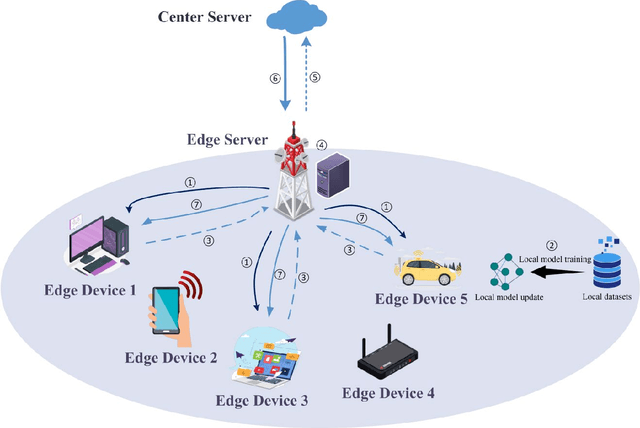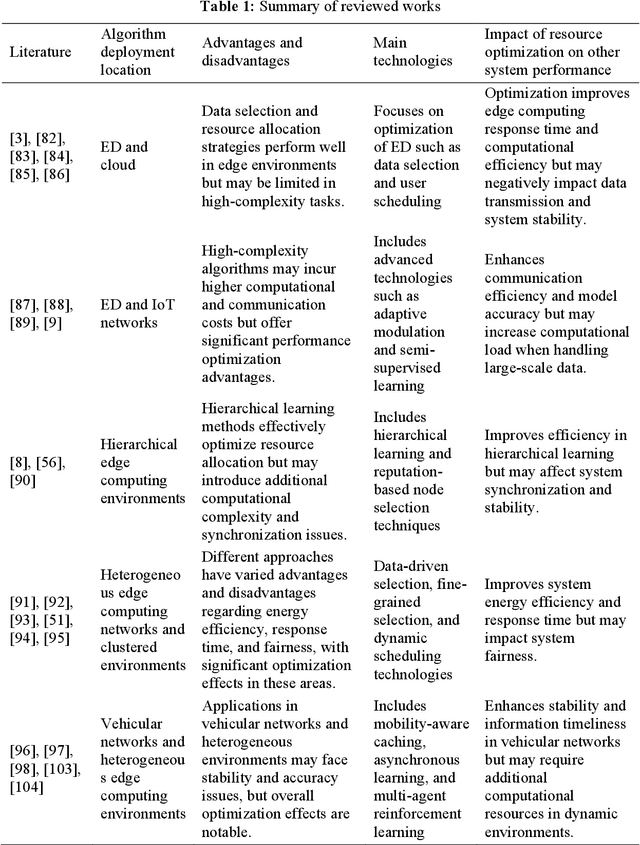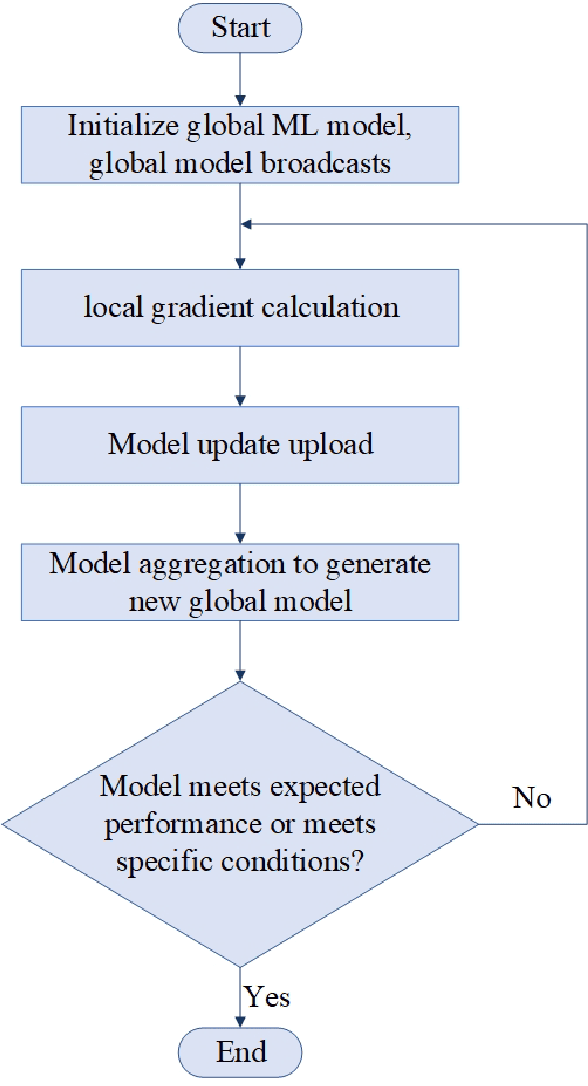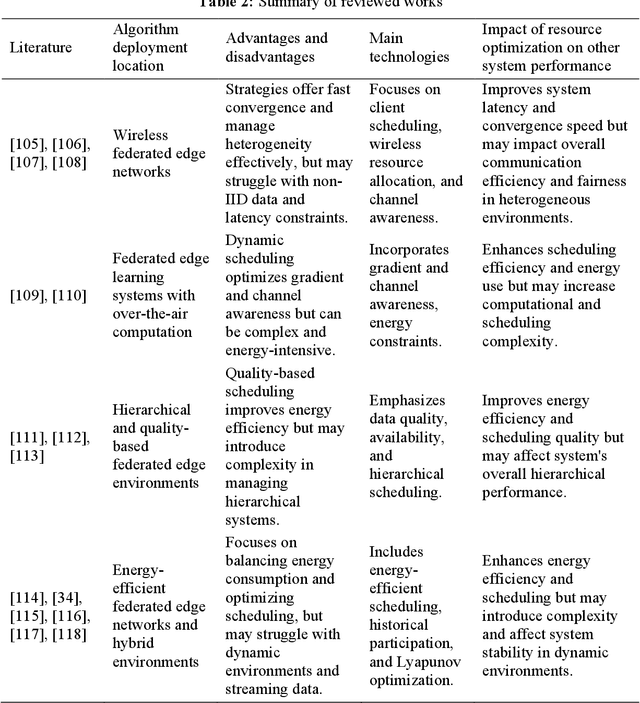Qiang Fan
Semantic-Aware Resource Management for C-V2X Platooning via Multi-Agent Reinforcement Learning
Nov 07, 2024



Abstract:This paper presents a semantic-aware multi-modal resource allocation (SAMRA) for multi-task using multi-agent reinforcement learning (MARL), termed SAMRAMARL, utilizing in platoon systems where cellular vehicle-to-everything (C-V2X) communication is employed. The proposed approach leverages the semantic information to optimize the allocation of communication resources. By integrating a distributed multi-agent reinforcement learning (MARL) algorithm, SAMRAMARL enables autonomous decision-making for each vehicle, channel assignment optimization, power allocation, and semantic symbol length based on the contextual importance of the transmitted information. This semantic-awareness ensures that both vehicle-to-vehicle (V2V) and vehicle-to-infrastructure (V2I) communications prioritize data that is critical for maintaining safe and efficient platoon operations. The framework also introduces a tailored quality of experience (QoE) metric for semantic communication, aiming to maximize QoE in V2V links while improving the success rate of semantic information transmission (SRS). Extensive simulations has demonstrated that SAMRAMARL outperforms existing methods, achieving significant gains in QoE and communication efficiency in C-V2X platooning scenarios.
A Comprehensive Survey on Joint Resource Allocation Strategies in Federated Edge Learning
Oct 10, 2024



Abstract:Federated Edge Learning (FEL), an emerging distributed Machine Learning (ML) paradigm, enables model training in a distributed environment while ensuring user privacy by using physical separation for each user data. However, with the development of complex application scenarios such as the Internet of Things (IoT) and Smart Earth, the conventional resource allocation schemes can no longer effectively support these growing computational and communication demands. Therefore, joint resource optimization may be the key solution to the scaling problem. This paper simultaneously addresses the multifaceted challenges of computation and communication, with the growing multiple resource demands. We systematically review the joint allocation strategies for different resources (computation, data, communication, and network topology) in FEL, and summarize the advantages in improving system efficiency, reducing latency, enhancing resource utilization and enhancing robustness. In addition, we present the potential ability of joint optimization to enhance privacy preservation by reducing communication requirements, indirectly. This work not only provides theoretical support for resource management in federated learning (FL) systems, but also provides ideas for potential optimal deployment in multiple real-world scenarios. By thoroughly discussing the current challenges and future research directions, it also provides some important insights into multi-resource optimization in complex application environments.
DRL-Based Resource Allocation for Motion Blur Resistant Federated Self-Supervised Learning in IoV
Aug 17, 2024



Abstract:In the Internet of Vehicles (IoV), Federated Learning (FL) provides a privacy-preserving solution by aggregating local models without sharing data. Traditional supervised learning requires image data with labels, but data labeling involves significant manual effort. Federated Self-Supervised Learning (FSSL) utilizes Self-Supervised Learning (SSL) for local training in FL, eliminating the need for labels while protecting privacy. Compared to other SSL methods, Momentum Contrast (MoCo) reduces the demand for computing resources and storage space by creating a dictionary. However, using MoCo in FSSL requires uploading the local dictionary from vehicles to Base Station (BS), which poses a risk of privacy leakage. Simplified Contrast (SimCo) addresses the privacy leakage issue in MoCo-based FSSL by using dual temperature instead of a dictionary to control sample distribution. Additionally, considering the negative impact of motion blur on model aggregation, and based on SimCo, we propose a motion blur-resistant FSSL method, referred to as BFSSL. Furthermore, we address energy consumption and delay in the BFSSL process by proposing a Deep Reinforcement Learning (DRL)-based resource allocation scheme, called DRL-BFSSL. In this scheme, BS allocates the Central Processing Unit (CPU) frequency and transmission power of vehicles to minimize energy consumption and latency, while aggregating received models based on the motion blur level. Simulation results validate the effectiveness of our proposed aggregation and resource allocation methods.
Mobility-Aware Federated Self-supervised Learning in Vehicular Network
Aug 01, 2024



Abstract:Federated Learning (FL) is an advanced distributed machine learning approach, that protects the privacy of each vehicle by allowing the model to be trained on multiple devices simultaneously without the need to upload all data to a road side unit (RSU). This enables FL to handle scenarios with sensitive or widely distributed data. However, in these fields, it is well known that the labeling costs can be a significant expense, and models relying on labels are not suitable for these rapidly evolving fields especially in vehicular networks, or mobile internet of things (MIoT), where new data emerges constantly. To handle this issue, the self-supervised learning paves the way for training without labels. Additionally, for vehicles with high velocity, owing to blurred images, simple aggregation not only impacts the accuracy of the aggregated model but also reduces the convergence speed of FL. This paper proposes a FL algorithm based on image blur level to aggregation, called FLSimCo, which does not require labels and serves as a pre-training stage for self-supervised learning in the vehicular environment. Simulation results demonstrate that the proposed algorithm exhibits fast and stable convergence.
Distributed Deep Reinforcement Learning Based Gradient Quantization for Federated Learning Enabled Vehicle Edge Computing
Jul 11, 2024



Abstract:Federated Learning (FL) can protect the privacy of the vehicles in vehicle edge computing (VEC) to a certain extent through sharing the gradients of vehicles' local models instead of local data. The gradients of vehicles' local models are usually large for the vehicular artificial intelligence (AI) applications, thus transmitting such large gradients would cause large per-round latency. Gradient quantization has been proposed as one effective approach to reduce the per-round latency in FL enabled VEC through compressing gradients and reducing the number of bits, i.e., the quantization level, to transmit gradients. The selection of quantization level and thresholds determines the quantization error, which further affects the model accuracy and training time. To do so, the total training time and quantization error (QE) become two key metrics for the FL enabled VEC. It is critical to jointly optimize the total training time and QE for the FL enabled VEC. However, the time-varying channel condition causes more challenges to solve this problem. In this paper, we propose a distributed deep reinforcement learning (DRL)-based quantization level allocation scheme to optimize the long-term reward in terms of the total training time and QE. Extensive simulations identify the optimal weighted factors between the total training time and QE, and demonstrate the feasibility and effectiveness of the proposed scheme.
Joint Optimization of Age of Information and Energy Consumption in NR-V2X System based on Deep Reinforcement Learning
Jul 11, 2024



Abstract:Autonomous driving may be the most important application scenario of next generation, the development of wireless access technologies enabling reliable and low-latency vehicle communication becomes crucial. To address this, 3GPP has developed Vehicle-to-Everything (V2X) specifications based on 5G New Radio (NR) technology, where Mode 2 Side-Link (SL) communication resembles Mode 4 in LTE-V2X, allowing direct communication between vehicles. This supplements SL communication in LTE-V2X and represents the latest advancement in cellular V2X (C-V2X) with improved performance of NR-V2X. However, in NR-V2X Mode 2, resource collisions still occur, and thus degrade the age of information (AOI). Therefore, a interference cancellation method is employed to mitigate this impact by combining NR-V2X with Non-Orthogonal multiple access (NOMA) technology. In NR-V2X, when vehicles select smaller resource reservation interval (RRI), higher-frequency transmissions take ore energy to reduce AoI. Hence, it is important to jointly consider AoI and communication energy consumption based on NR-V2X communication. Then, we formulate such an optimization problem and employ the Deep Reinforcement Learning (DRL) algorithm to compute the optimal transmission RRI and transmission power for each transmitting vehicle to reduce the energy consumption of each transmitting vehicle and the AoI of each receiving vehicle. Extensive simulations have demonstrated the performance of our proposed algorithm.
Semantic-Aware Resource Allocation Based on Deep Reinforcement Learning for 5G-V2X HetNets
Jun 12, 2024Abstract:This letter proposes a semantic-aware resource allocation (SARA) framework with flexible duty cycle (DC) coexistence mechanism (SARADC) for 5G-V2X Heterogeneous Network (HetNets) based on deep reinforcement learning (DRL) proximal policy optimization (PPO). Specifically, we investigate V2X networks within a two-tiered HetNets structure. In response to the needs of high-speed vehicular networking in urban environments, we design a semantic communication system and introduce two resource allocation metrics: high-speed semantic transmission rate (HSR) and semantic spectrum efficiency (HSSE). Our main goal is to maximize HSSE. Additionally, we address the coexistence of vehicular users and WiFi users in 5G New Radio Unlicensed (NR-U) networks. To tackle this complex challenge, we propose a novel approach that jointly optimizes flexible DC coexistence mechanism and the allocation of resources and base stations (BSs). Unlike traditional bit transmission methods, our approach integrates the semantic communication paradigm into the communication system. Experimental results demonstrate that our proposed solution outperforms traditional bit transmission methods with traditional DC coexistence mechanism in terms of HSSE and semantic throughput (ST) for both vehicular and WiFi users.
Anti-Byzantine Attacks Enabled Vehicle Selection for Asynchronous Federated Learning in Vehicular Edge Computing
Apr 12, 2024Abstract:In vehicle edge computing (VEC), asynchronous federated learning (AFL) is used, where the edge receives a local model and updates the global model, effectively reducing the global aggregation latency.Due to different amounts of local data,computing capabilities and locations of the vehicles, renewing the global model with same weight is inappropriate.The above factors will affect the local calculation time and upload time of the local model, and the vehicle may also be affected by Byzantine attacks, leading to the deterioration of the vehicle data. However, based on deep reinforcement learning (DRL), we can consider these factors comprehensively to eliminate vehicles with poor performance as much as possible and exclude vehicles that have suffered Byzantine attacks before AFL. At the same time, when aggregating AFL, we can focus on those vehicles with better performance to improve the accuracy and safety of the system. In this paper, we proposed a vehicle selection scheme based on DRL in VEC. In this scheme, vehicle s mobility, channel conditions with temporal variations, computational resources with temporal variations, different data amount, transmission channel status of vehicles as well as Byzantine attacks were taken into account.Simulation results show that the proposed scheme effectively improves the safety and accuracy of the global model.
Blockchain-Enabled Variational Information Bottleneck for IoT Networks
Mar 10, 2024



Abstract:In Internet of Things (IoT) networks, the amount of data sensed by user devices may be huge, resulting in the serious network congestion. To solve this problem, intelligent data compression is critical. The variational information bottleneck (VIB) approach, combined with machine learning, can be employed to train the encoder and decoder, so that the required transmission data size can be reduced significantly. However, VIB suffers from the computing burden and network insecurity. In this paper, we propose a blockchain-enabled VIB (BVIB) approach to relieve the computing burden while guaranteeing network security. Extensive simulations conducted by Python and C++ demonstrate that BVIB outperforms VIB by 36%, 22% and 57% in terms of time and CPU cycles cost, mutual information, and accuracy under attack, respectively.
Cooperative Edge Caching Based on Elastic Federated and Multi-Agent Deep Reinforcement Learning in Next-Generation Network
Jan 18, 2024Abstract:Edge caching is a promising solution for next-generation networks by empowering caching units in small-cell base stations (SBSs), which allows user equipments (UEs) to fetch users' requested contents that have been pre-cached in SBSs. It is crucial for SBSs to predict accurate popular contents through learning while protecting users' personal information. Traditional federated learning (FL) can protect users' privacy but the data discrepancies among UEs can lead to a degradation in model quality. Therefore, it is necessary to train personalized local models for each UE to predict popular contents accurately. In addition, the cached contents can be shared among adjacent SBSs in next-generation networks, thus caching predicted popular contents in different SBSs may affect the cost to fetch contents. Hence, it is critical to determine where the popular contents are cached cooperatively. To address these issues, we propose a cooperative edge caching scheme based on elastic federated and multi-agent deep reinforcement learning (CEFMR) to optimize the cost in the network. We first propose an elastic FL algorithm to train the personalized model for each UE, where adversarial autoencoder (AAE) model is adopted for training to improve the prediction accuracy, then {a popular} content prediction algorithm is proposed to predict the popular contents for each SBS based on the trained AAE model. Finally, we propose a multi-agent deep reinforcement learning (MADRL) based algorithm to decide where the predicted popular contents are collaboratively cached among SBSs. Our experimental results demonstrate the superiority of our proposed scheme to existing baseline caching schemes.
 Add to Chrome
Add to Chrome Add to Firefox
Add to Firefox Add to Edge
Add to Edge